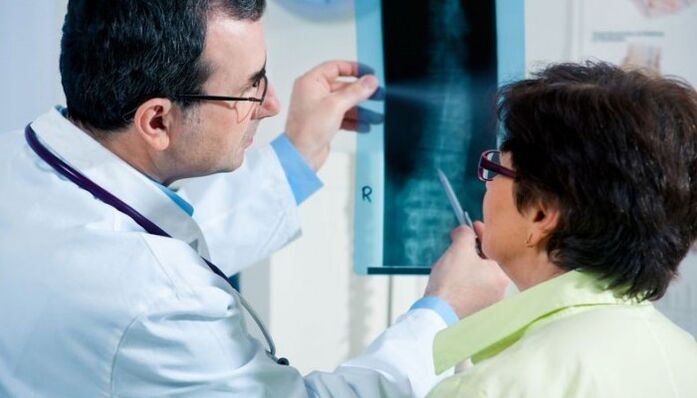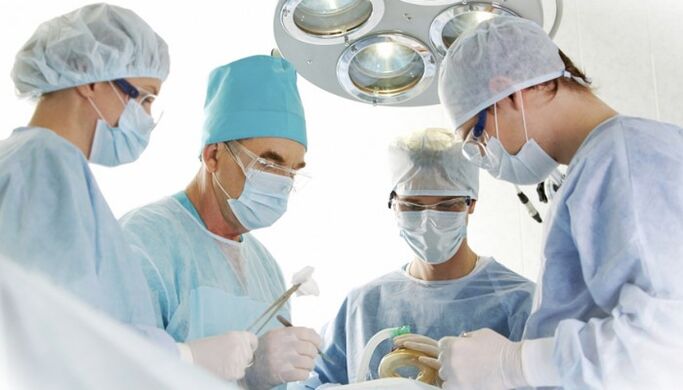Every second inhabitant of the earth faces spine problems.Osteochondrosis of the neck is one of the most common diseases that requires special attention.Lack of timely treatment can lead to serious consequences.Especially in advanced cases, complications can lead to a fatal outcome.
stages
Osteochondrosis of the cervical spine in women and men develops gradually and has periods of increased symptoms and remission.Signs of the disease appear when the process of destruction of the spine reaches a serious stage.
There are four degrees of cervical osteochondrosis:
- initial stage.Disturbances in the structure of the intervertebral discs are characteristic.Due to loss of moisture, they become thinner.Cracks appear on the fiber rings.Often, at this stage, there are practically no signs of cervical osteochondrosis.However, if the pathology can be identified, it is possible to completely restore the damaged intervertebral discs.The first stage of the development of cervical osteochondrosis is very favorable for starting treatment.
- the second stageThe disease is associated with an aggravation of the tissue condition of the intervertebral discs.They are significantly reduced in size.This leads to a weakening of the muscular corset and spinal ligaments.Cervical spine instability appears and spine mobility increases.Often, the first symptoms of osteochondrosis appear at this stage.
- in the third stageDeformation of the spinal column becomes obvious.A rash and a hernia appear.Symptoms of cervical osteochondrosis are pronounced.
- The fourth stageIt is accompanied by the formation of osteophytes, ossification of ligaments (ossification) and other deformations.These signs of osteochondrosis are evidence that the body is trying by all means to stabilize the damaged segments of the spinal column.
The peculiarity of the cervical spine is the short distance between the vertebrae.When structural disorders of these segments occur, the spinal cord, nerve endings, and vessels of the circulatory system are stretched.
Manifestations
Symptoms of cervical osteochondrosis may depend on which part of the spine the affected object is located.The following mechanisms of the negative impact of pathology are distinguished, as well as accompanying symptoms of cervical osteochondrosis:
- Radicular syndrome.The pain goes from the cervical spine to the fingers.There is a tingling sensation in different parts of the upper limbs and a goosebump effect.
- Vertebral artery syndromeIt causes blood circulation disorders in the brain.It is accompanied by weakness, nausea, impaired hearing and vision and disorders of the vestibular apparatus.May cause sharp or throbbing headache in occipital, parietal, temporal and superficial regions.
- for heart syndromeSymptoms of osteochondrosis can be mistaken for angina pectoris.Pain attacks can last for several hours and are accompanied by extrasystole or tachycardia.
- Irritable-reflex syndrome.This phenomenon causes acute attacks of pain in the back of the head or neck.Unpleasant sensations are transmitted to the shoulder or chest area.They appear when moving after a long rest.
It is unacceptable to ignore these signs of osteochondrosis of the cervical spine in men and women.
If such symptoms appear, you should consult a neurologist as soon as possible.
Types of diagnostics

Cervical osteochondrosis has symptoms similar to many other pathologies.Therefore, before making a specific diagnosis, the doctor must find out exactly what symptoms caused the patient's concern and then conduct an examination.
Based on his observations, the specialist can make a preliminary diagnosis.But to determine the causes of the pathology more precisely, additional research is needed.The main methods of diagnosing cervical osteochondrosis are:
- Radiography.The most accessible instrumental method.Almost any clinic has a minimum technical base to conduct such research.X-ray provides information about the location and severity of the pathological process.Allows you to determine what results caused osteochondrosis of the cervical spine.X-rays are taken in different projections to get a complete picture of the disease.
- Computed tomography.Allows you to see all the changes in the structure of the spinal tissues, thanks to the possibility of layer-by-layer examination.Using this method, you can determine the stage of cervical osteochondrosis, the presence of protrusion and hernia.Computed tomography perfectly reflects the condition of all components of the spine region, except for the intervertebral discs.
- MRI.The most accurate and informative method for diagnosing cervical osteochondrosis.The resulting images allow you to assess the condition of the spinal column segments, nerves and blood vessels.This becomes possible due to the absence of images of other organs on the projection.Magnetic resonance imaging helps to identify the location of damaged segments, detect changes in tissues, narrowing of the spinal canal, as well as degenerative changes in the intervertebral disc, such as protrusion and hernia.
treatment
Osteochondrosis of the cervical spine is associated with degenerative disorders of the structure of the intervertebral discs, as well as with the tissues and ligaments of the spinal column located next to them.Men and women of all age groups can be affected.This is due to a large number of unfavorable factors, including a sedentary lifestyle, poor posture and poor nutrition.
The issue of correct treatment of cervical osteochondrosis is very relevant.Therapy can be conservative (in non-advanced cases) or surgical (sequestered hernia).
If the patient has signs of osteochondrosis, the treatment regimen should be selected individually for the individual patient.The therapeutic program may depend on the following factors:
- stages of the disease;
- period of exacerbation or remission;
- Individual characteristics of the patient.
Treatment of osteochondrosis should be prescribed by a doctor after a complete examination of the patient and an accurate diagnosis.
conservative methods

The main goal of the therapy of degenerative changes in the spine is to prevent the development of pathology and complications.It is not enough to use any method to achieve a favorable result in the treatment of cervical osteochondrosis;It is important to use an integrated approach.
At the first stage of therapy, the recommendations of doctors are aimed at eliminating pain and restoring the function of blood circulation.At the next stage, you can switch to physical therapy procedures, manual therapy and exercise therapy.
Types of conservative therapy include:
- Treatment with drugs.This method is characterized by the use of drugs of various effects: analgesics, antispasmodics, nonsteroidal anti-inflammatory drugs, vasodilators, chondroprotectors, sedatives, vitamins, minerals.Drug treatment can be prescribed during exacerbation of the disease with significant pain and increased muscle tone.Cervical osteochondrosis can be treated with ointments or gels only in case of mild inflammation.In other cases, these measures are not effective.
- Physiotherapy.Treatment with physical factors (magnetic field, ultrasound, low-frequency currents) can be used at any stage of pathology development.Physiotherapy procedures help reduce pain, stimulate blood circulation, metabolism, and also allow you to reduce the dose of medication.For the treatment of cervical osteochondrosis, electrophoresis with medication, darsonval, ultrasound, laser therapy and magnetic therapy can be prescribed.Each of these types of physiotherapy procedures has its own contraindications.For this reason, the doctor should choose the method of treatment.
- manual therapy.The goals of this method include normalizing muscle tone, improving blood circulation, and eliminating cervical spine deformation.The therapeutic effect is achieved using physical influence in the form of pressure, vibration and friction.To achieve noticeable long-term effects, manual therapy should be combined with medication, physical therapy, and exercise therapy.
- physical therapy.The course of cervical osteochondrosis can be alleviated by conducting a course of special exercises.This allows you to develop muscles and significantly reduce the load on the damaged segments of the spine.A set of gymnastic exercises can be selected only by the attending physician, taking into account the characteristics of the patient.It is recommended to start lessons under the supervision of a specialist.When pain occurs, it is not advisable to engage in physical therapy.
surgical method

If cervical osteochondrosis does not respond to conservative treatment, surgical intervention may be necessary.Most often this happens during compression of the spinal cord or herniated discs.
The aim of the surgical operation is to eliminate compression of nerve roots and blood vessels, as well as to stabilize the cervical spine.In this case, the following methods are used:
- Discectomy- Complete or partial elimination of the intervertebral disc.The procedure is performed using microsurgical instruments.This minimizes damage to the surrounding tissue.
- Laser disc reconstruction.During the operation, a needle is placed in the damaged area and a special cable is inserted into it.Under the influence of laser energy, the intervertebral disc is heated.This stimulates the growth of cells, and in 3-6 months they fill all the voids caused by the disease.The operation is performed under local anesthesia.
- Arthrodesis.All manipulations are performed through a small incision in the front or back of the neck.As a result of the operation, compression of the spinal cord and nerve endings is removed, artificial implants or special metal structures are installed.They correct the bend line of physiological lordosis.
Treatment of cervical osteochondrosis is surgically possible only in the most difficult cases of the disease.This is associated with a high risk of complications.Possible consequences of the operation include damage to the nerve endings or spinal cord, narrowing of the spinal canal due to scars, the development of infections and many other unpleasant consequences.
Prevention methods
Osteochondrosis of the neck can develop in both women and men at any age.Many factors contribute to this.The disease can be prevented by simple preventive measures.To do this, just follow a few basic rules:
- Do not twist your spine under heavy loads.Avoid sudden movements and injuries, periodically change the position of the body, evenly distribute the load when moving heavy objects and choose comfortable shoes.
- Do gymnastics exercises regularly to strengthen the neck muscles.
- toughen up
- Keep a balance in your food intake.
- Give up bad habits.
It is important to remember that prevention of the development of pathology is much easier than its long and expensive treatment later.Observance of simple measures for the prevention of the disease will allow you to never know what cervical osteochondrosis is.

















































